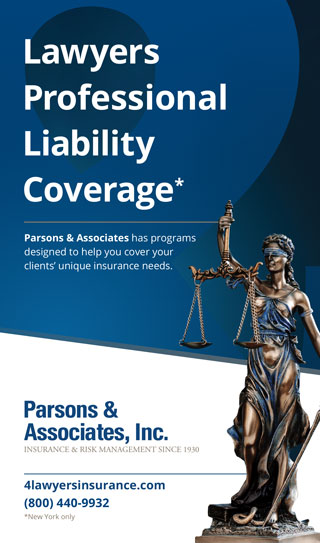New York state lawmakers are taking aim at a controversial insurance policy provision that has left many homeowners frustrated after disasters.
A new bill, S.6205, introduced by Sen. James Skoufis, D-42, would limit the use of anticoncurrent causation clauses in certain circumstances, which would ensure that policyholders receive coverage for damages caused by covered perils—even if an excluded peril also played a role.
If passed, this legislation would impact homeowners, insurance companies and agents significantly, and change the way claims are handled after major storms or natural disasters.
What are anticoncurrent causation clauses?
An anticoncurrent causation clause is a provision in an insurance policy that allows an insurer to deny coverage for a loss if both a covered peril and an excluded peril contribute to the damage—whether at the same time or one after the other. For example, a windstorm—typically a covered peril—damages a house’s roof.
At the same time, a flood—typically an excluded peril—causes damage to the foundation. Because of an ACC clause, the insurer may deny the entire claim, even though wind damage should have been covered.
This practice gained widespread attention after Superstorm Sandy, when many homeowners were shocked to find their insurance claims denied because wind damage occurred alongside flooding.
What would the bill do?
If passed, S.6205 would make it illegal for insurers to deny coverage for a covered peril just because an excluded peril also was a factor.
Key provisions of the bill include:
- If a covered peril—like wind damage—occurs at the same time as an excluded peril—like flooding—insurers still would cover the loss caused by the covered peril.
- Insurers would not have to cover any portion of the damage caused specifically by the excluded peril (e.g., they wouldn’t be required to pay for flood damage).
- If an insurance policy would include any provisions about ACC clauses, the insurer must clearly state which excluded perils could limit coverage and whether the exclusion applies to proximate or remote causes.
- This information would have to be disclosed before the policy is sold, ensuring policyholders know what they’re getting.
The pros and cons
As with any insurance reform, this bill has supporters and critics who see different implications for homeowners and the industry.
Potential benefits for homeowners
Greater clarity and fairness: Homeowners would no longer risk having a legitimate claim denied just because an excluded peril also was involved.
More protection after major storms: Homeowners hit by hurricanes, nor’easters, or severe storms would be less likely to face unexpected coverage gaps.
Improved transparency: Insurers would be required to disclose exactly how exclusions work, preventing surprises when claims are filed.
Potential concerns for insurers
Higher costs and premiums: Insurers could see increased payouts, which might lead to higher premiums for homeowners.
Changes to underwriting: Carriers might need to reassess how they write policies and adjust pricing models based on increased exposure.
Legal and operational adjustments: Insurers would need to revise policies and train agents on the new rules, leading to administrative costs.
What’s next?
The bill has been introduced in the New York state Senate and it has been referred to the Senate Insurance Committee. If it advances through the Legislature and becomes law, it will apply to all homeowners insurance policies issued or renewed after its effective date.
For insurance agents, brokers and policyholders, this legislation could bring significant changes to how claims are handled—especially in disaster-prone areas.
As the bill progresses, agents should prepare to educate clients on how their policies might change and what it means for their coverage.
Homeowners should review their policies carefully and ask questions to ensure they understand how exclusions work.
Get involved
If you want to get involved with PIANY’s legislative and advocacy work, there are many ways to engage with the association:
- Participate in PIANY’s District Office Visit Program;
- Become a member of Agents Advocacy Coalition; and
- Watch your PIA Northeast publications and PIA Northeast’s social-media channels for important New York updates and share them with your followers.

Bradford J. Lachut, Esq.
Bradford J. Lachut, Esq., joined PIA as government affairs counsel for the Government & Industry Affairs Department in 2012 and then, after a four-month leave, he returned to the association in 2018 as director of government & industry affairs responsible for all legal, government relations and insurance industry liaison programs for the five state associations. Prior to PIA, Brad worked as an attorney for Steven J. Baum PC, in Amherst, and as an associate attorney for the law office of James Morris in Buffalo. He also spent time serving as senior manager of government affairs as the Buffalo Niagara Partnership, a chamber of commerce serving the Buffalo, N.Y., region, his hometown. He received his juris doctorate from Buffalo Law School and his Bachelor of Science degree in Government and Politics from Utica College, Utica, N.Y. Brad is an active Mason and Shriner.






